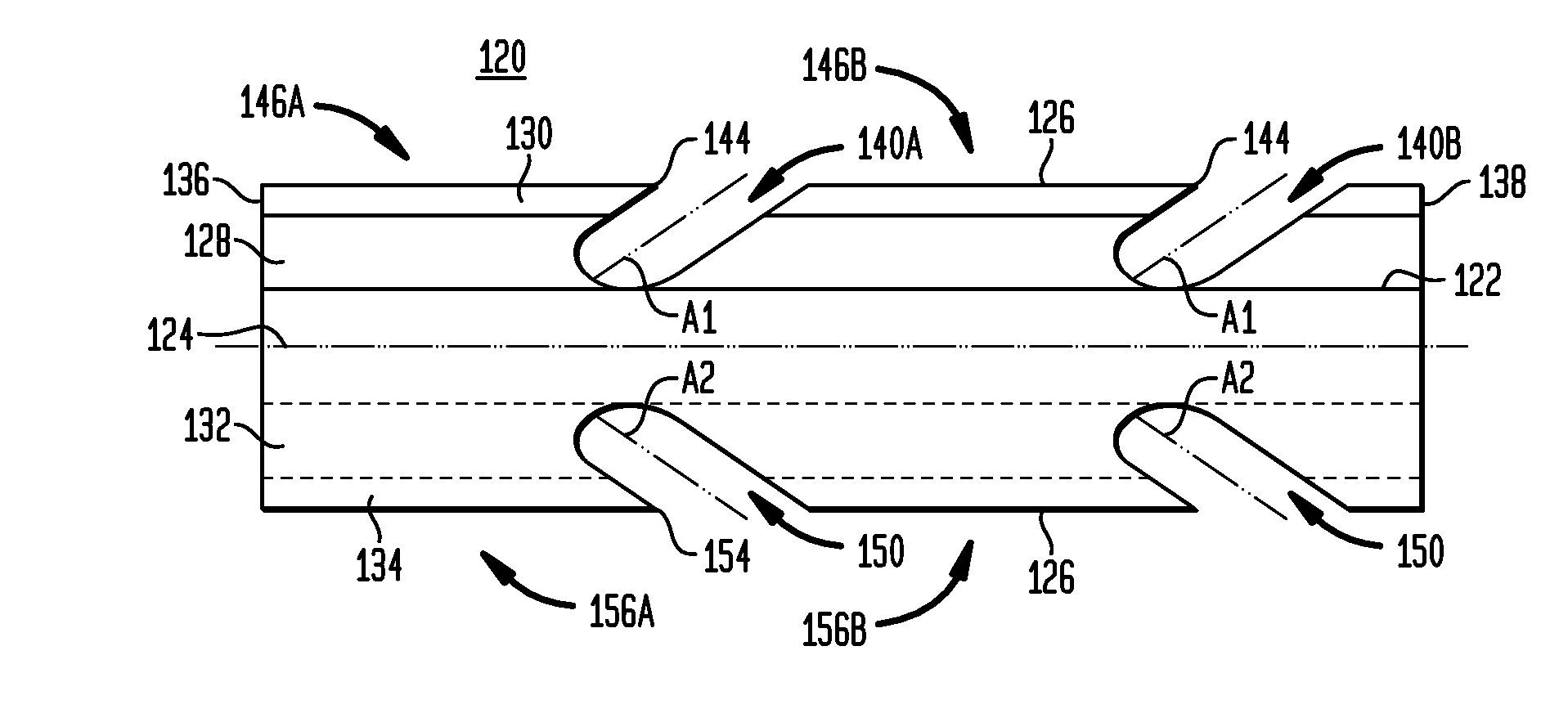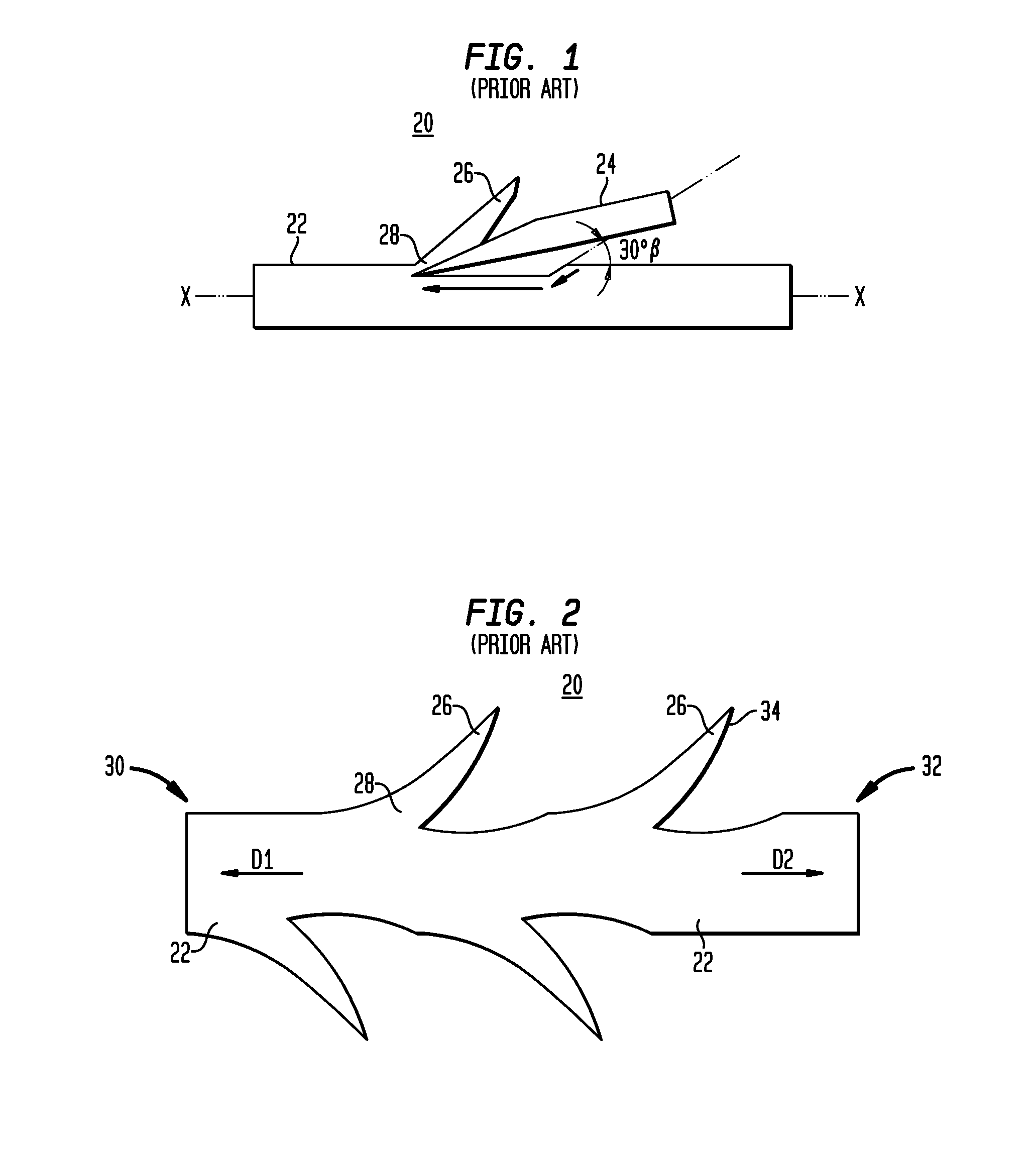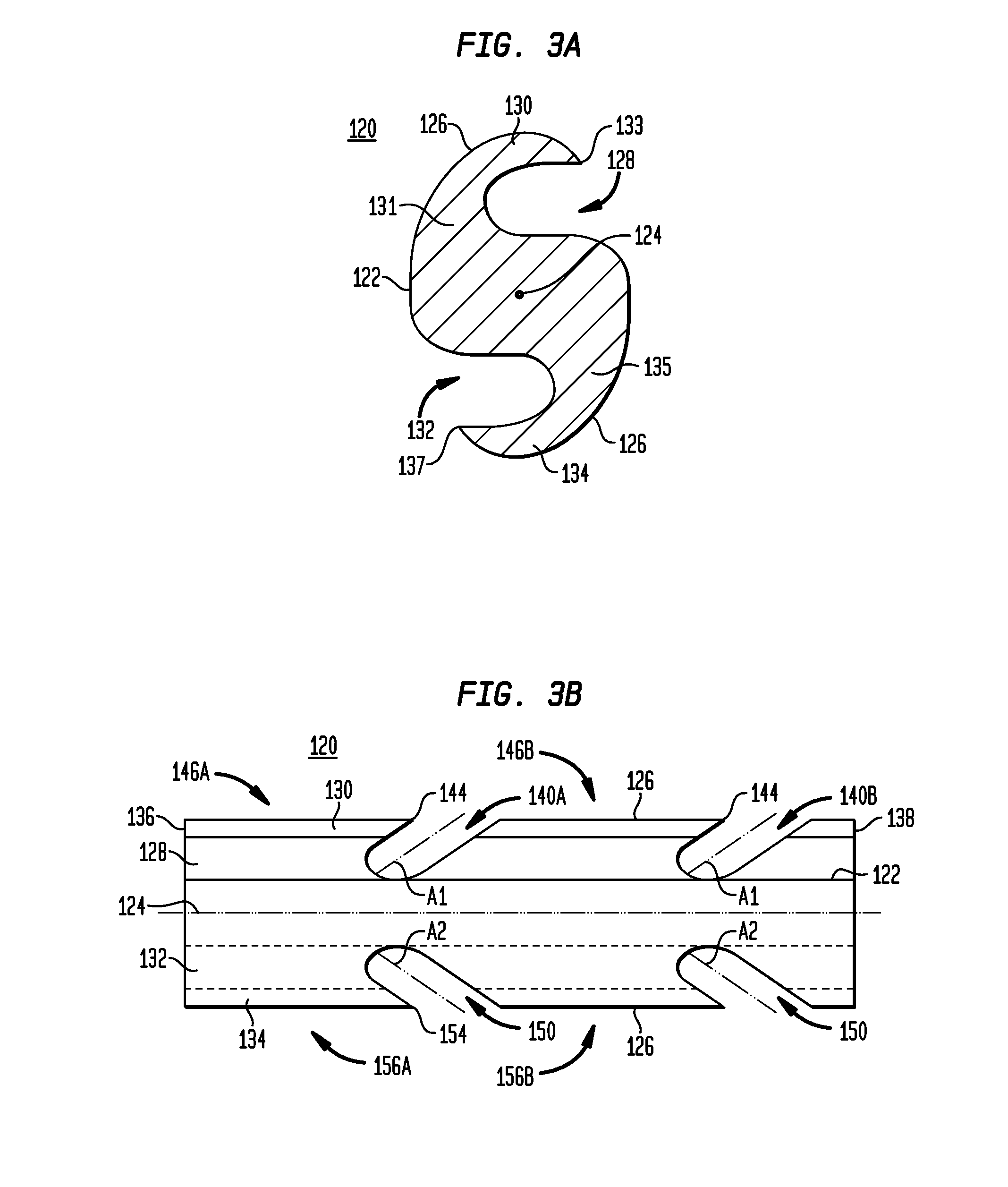Collapsible barbed sutures having reduced drag and methods therefor
a barbed suture and drag reduction technology, applied in the field of surgical sutures, can solve the problems of re-opening the wound or incision, reducing so as to reduce the drag and/or the “sawing effect, enhance the flexibility of the barb, and minimize the drag
- Summary
- Abstract
- Description
- Claims
- Application Information
AI Technical Summary
Benefits of technology
Problems solved by technology
Method used
Image
Examples
Embodiment Construction
[0047]Conventional barbed sutures tend to be rigid and relatively inflexible. Prior art attempts to improve the flexibility of barbs has often resulted in barbed sutures having barbs that easily delaminate from a core thread or filament of the suture, or barbs that exhibit inadequate load bearing properties due to increased barb flexibility. Other attempts to prevent delamination have produced rigid barbs that do not flex / collapse easily when pulled through media, which can impart significant drag and “sawing effect” media damage during passage. In addition, the drag and media damage effects become exaggerated when the barbed elements radially oppose each other along the length of the suture.
[0048]Although the present invention is not limited by any particular theory of operation, it is believed that the barbed suture disclosure herein may be pulled through tissue with minimal “sawing effect” and with no loss of core thread strength due to providing a barbed suture having thin walle...
PUM
 Login to View More
Login to View More Abstract
Description
Claims
Application Information
 Login to View More
Login to View More - R&D
- Intellectual Property
- Life Sciences
- Materials
- Tech Scout
- Unparalleled Data Quality
- Higher Quality Content
- 60% Fewer Hallucinations
Browse by: Latest US Patents, China's latest patents, Technical Efficacy Thesaurus, Application Domain, Technology Topic, Popular Technical Reports.
© 2025 PatSnap. All rights reserved.Legal|Privacy policy|Modern Slavery Act Transparency Statement|Sitemap|About US| Contact US: help@patsnap.com



